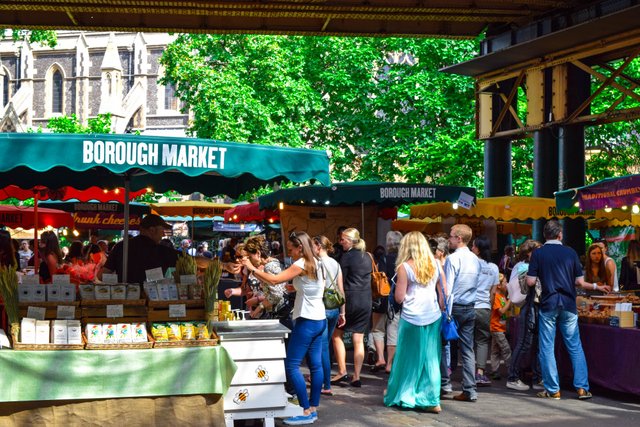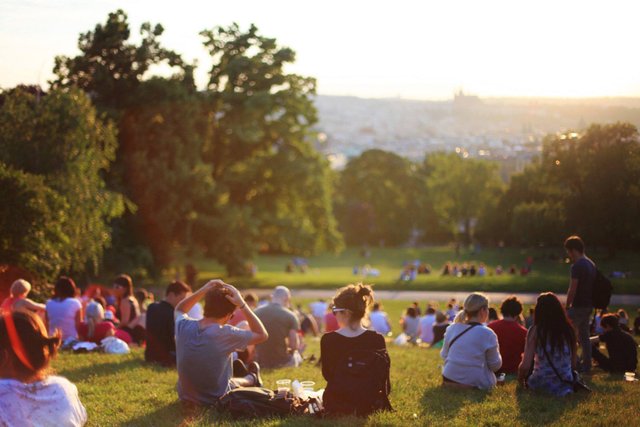How space bends to the whims of society
 Markets are the result of commercial interactions. Photo by: Mark Dalton
Markets are the result of commercial interactions. Photo by: Mark Dalton
A city is like a biosphere, it consists of innumerable actors, each minding their own business, and furthering their own cause. These selfish actions inadvertently creates a complex network of interaction, both in the physical, and the social realm, which then gives life to a formerly sterile, and empty space. Human to human interactions such as trading, communicating, and cooperating are the building blocks of these networks, without them, a location would, as mentioned above, simply be a space, void of any distinction, and without a clear purpose, A.K.A an empty lot.
What begins as an undifferentiated space becomes place as we get to know it better and endow it with value
Tuan, Space and Place: The Perspective of Experience.
In response, those networks of interaction began adopting certain traits that are commonly associated with the dominant activity happening under its premises. Learning networks, such as classrooms usually have blackboards and computers to aid studying, the atmosphere is generally very quiet, formal and serious. Relaxation networks such as parks almost certainly have benches and/or trees with shady canopies, besides that, they also have a completely different atmosphere compared to those of the learning networks, it is more relaxed, informal, and vibrant, quite in contrast to the serious nature found in those learning networks. Commercial networks on the other hand are usually marked by signs promoting items, sales, or special events, they are also supplemented by parking lots if they are not built on TOD designed neighborhoods. From the brief descriptions above, we can conclude that each network of interaction produces a different and unique set of characteristics, that will define the look, and feel of it. When spaces have these unique characteristics, they become memorable, they become unique, and most importantly, they fill a niche, this is the process of how plain spaces turns into a place.

Parks are an avenue of social interactions. Photo by: Leah Kelley
The evolution of space into place should be as natural as possible to insure it is indeed by the public, and for the public. When markets and trading stations develop, they are usually created by the actors themselves that needs a place to trade their wares, the buyer’s also affect its location by having a say in how far they are willing to go to acquire those goods. Community centers are also an example of a natural place, it is extremely hard to create a living and vibrant community center/park from nothing, the inhabitants absolutely have to play a part in building it from the ground up, through multiple activities, and frequent uses, that is why, most successful community centers and parks are generally located in dense mixed use areas, they simply have more amenities, and available activities for the inhabitants and visitors to do and enjoy.

A dam is an example of a place that is created by government policies. Photo by: Ciboulette
But not all places result from the complex interactions between human beings, sometimes it is impossible for any kind of interaction to fill certain specific niches, even if they are needed by the society as a whole. Nowadays a lot of places are created by governments and developers when they are zoning, or building new projects. Places that are the result of these activities are usually in the form of expensive hard infrastructure that is used by or benefits the public, such as railroads, freeways, dams, power stations, and airports, to name a few.
An easier illustration as to how a space turns into place would be to imagine an empty plot of land, it has nothing in it, so there is nothing happening in that area, nothing that sets it apart from any other plot of land. But by the virtue of development, the area around it begins to become more built, they turn into housing complexes, business centers, and commercial districts, this solitary plot of land then becomes a refuge for people seeking relaxation and calm amidst the bustling city. To make the area more relaxing, they began to plant trees, place benches, and install a playground for kids. This increases the attractiveness of that place, and makes it memorable, it stands out from any other space, or empty plot of land in that area. That ‘space’ now has amenities, and a clear niche to fill in the daily lives of people, it now turns into a place, a place we call the park.